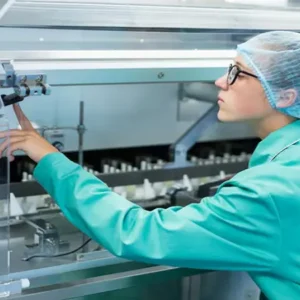Injection molding is a cornerstone of professional equipment manufacturing. This highly specialized process is integral to producing devices that meet the industry’s stringent safety and precision standards. But what does the professional journey of a medical device through injection molding entail?
Each stage, from the initial design to the final product, is meticulously executed to deliver reliable devices essential for healthcare professionals. The entire process of these devices through Medical injection molding is a testament to the industry’s commitment to quality and patient safety.
Initial Design and Engineering: Crafting the Blueprint for Success
The journey begins with a comprehensive design and engineering phase. Here, industry professionals collaborate with healthcare experts to translate clinical needs into detailed engineering blueprints. This step involves selecting appropriate materials, determining critical dimensions, and ensuring the product’s functionality and manufacturability.
Engineers utilize advanced computer-aided design (CAD) software to create precise models that are the foundation for the entire manufacturing process. At this stage, every detail is scrutinized to ensure the device performs flawlessly in its intended medical application. This stage is crucial as it establishes the foundation for attaining the best possible results in the subsequent production phases.
Prototyping and Testing: Validating the Design
Once the design is finalized, the prototyping phase commences. Professionals employ injection molding techniques to produce prototype models that resemble the final product. These prototypes undergo rigorous testing to validate the design’s functionality and identify potential improvements.
The prototyping phase is crucial for refining the device, allowing engineers to make necessary adjustments before committing to full-scale production. This phase guarantees that the final product will satisfy all performance requirements and industry standards, reducing the likelihood of errors during large-scale production. Ultimately, this stage bridges the gap between concept and reality, ensuring that the final device is practical and effective.
Material Selection: Ensuring Compliance and Durability
Selecting the appropriate material for medical devices is a critical decision made by experts who understand the complexities of biocompatibility and regulatory compliance. These professionals assess various medical-grade polymers, considering factors such as sterilization compatibility, mechanical strength, and chemical resistance.
The chosen material must meet rigorous industry standards and ensure the device’s longevity and safety in clinical settings. This meticulous selection process is essential for producing healthcare devices that are both reliable and compliant with global regulations. By carefully choosing materials, manufacturers can guarantee that their products will withstand the demanding environments in which they are used.
Precision Molding: Achieving Exacting Standards
With the design and material selected, the injection molding process begins. This stage involves injecting molten material into a precisely engineered mold, which cools and solidifies into the desired shape. Professional injection molders utilize state-of-the-art equipment to achieve exceptional precision, producing components with tight tolerances and complex geometries.
Precision is non-negotiable in this industry; even minor deviations can significantly affect patient safety. Advanced quality control measures are implemented throughout the molding process to ensure that every device meets the highest standards of accuracy and consistency. This level of precision is what distinguishes professional-grade devices from lesser-quality alternatives.
Quality Assurance and Compliance: Upholding Industry Standards
Following the molding process, each device undergoes comprehensive quality assurance testing. Professionals conduct rigorous assessments to detect defects or inconsistencies, including dimensional analysis and functional testing. These tests ensure that every device complies with regulatory standards and performs as intended in clinical environments.
Upholding quality and safety standards is of utmost importance in the tightly regulated medical industry. Only devices that pass these stringent tests are approved for distribution, ensuring that healthcare professionals receive products they can trust. The thoroughness of this phase underscores the industry’s unwavering commitment to delivering safe and effective medical devices.
Final Production and Distribution: Delivering High-Quality Devices
Once the devices have successfully passed all quality assurance tests, they are prepared for final production and distribution. This stage involves packaging and sterilization, following strict industry protocols to maintain product integrity and safety. The devices are then distributed to healthcare facilities used in critical medical procedures.
The professional injection molding process, from concept to completion, ensures that the final products are high-quality and meet the demanding requirements of the medical industry. This meticulous approach is vital in advancing healthcare by providing professionals with reliable, cutting-edge medical devices. This attention to detail helps build trust between manufacturers and healthcare providers, ultimately benefiting patients.
The professional journey of these devices through Medical injection molding exemplifies the precision and expertise required in modern medical manufacturing. As technology advances, the capabilities of injection molding will continue to grow, leading to innovative and effective medical solutions. This process remains essential in producing the high-quality devices healthcare professionals depend on to deliver exceptional patient care. By continuously refining these processes, the industry ensures that it can meet the ever-changing needs of the medical field, contributing to better health outcomes worldwide.
